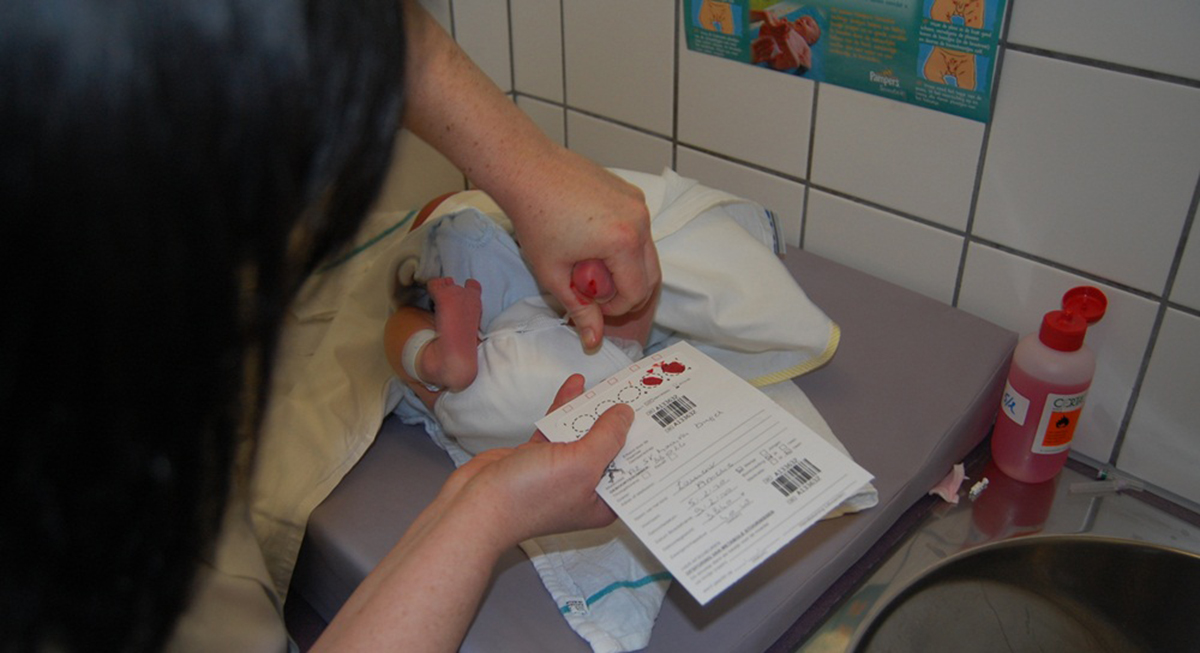All children develop at different rates and speed, some faster or slower than usual. And this is perfectly normal, even within the same family. However, there are some neurological disorders that can affect a child’s development in all areas, including motor, language, learning and cognition. Such neurological disorders can either affect the entire body system, or be focalized on the nervous system where most of the damage is noticed.

Some others can be inherited and reveal themselves only later in life, and finally some disorders can be acquired secondary to environmental exposure or trauma. Alternatively, neurological disorders in children can be classified based on the type of disorder, or based on their origin.
Types of Neurological Disorders in Children
Developmental Delay (Intellectual Disabilities)
A developmental delay can affect one (or more) of the 5 main areas of development: language or speech, vision, movement (motor skills), thinking (cognitive skills) and social skills. However, in some diseases more than one area is affected. Autism is a common disease that illustrates developmental delay in children. Children who are autistic have poor social skills and fail to display emotional connection with their peers and entourage. However, they are thought to have a good intellect, even though their main challenge is to express that intelligence. A similar but minor form of autism is Asperger Syndrome in which the features are less pronounced and the affected child is a little more socially immersed.
Though autism and Asperger Syndrome are caused of partial developmental delay, some other commonly encountered conditions can be held accountable for a more global developmental delay (which affects all the 5 areas of development). On top of the list, we have Down syndrome (Trisomy 21) which is caused by an extra-numerary chromosome at the 21st pair. We could also mention Fragile X syndrome which is an inherited disorder caused by a defect on the short arm of the X chromosome. Fetal Alcohol Syndrome (caused by alcohol consumption during pregnancy) is also a common cause of global developmental delay with pronounced mental retardation. Children with this syndrome have particular facial features like smooth philtrum, thin upper lip, low nasal bridge, short palpebral fissures, flattened face and minor ear abnormalities. These are facies characteristic of this condition.
Movement Disorders
Movement disorders are a group of neurological disorders characterized by abnormalities in the quality, the speed, the timing and the synchronization of movements when they are executed. In children (and even in adults), it has been established by researchers that almost (if not) all movement disorders occur secondary to a defect or a lesion in the basal ganglia; which is the brain center responsible for movement execution and coordination. In adults for instance, movement disorders such as Parkinson’s disease stem from the basal ganglia.
See Also: Is Autism Treatable?
For instance, there could have a case of a child suffering from dystonia which refers to sustained muscle contractions leading to abnormal posturing. Another common movement disorder is choreoathetosis (irregular movements with twisting and writing of the hands and feet). Children affected with strep throat or tonsillitis could also develop a condition called St Vitus Dance, which is a sequelae of the streptococcal infection affecting the basal ganglia.
Metabolic Diseases of Genetic Origin
Metabolic diseases of genetic origin could cause systemic effects, targeting all parts of the body. Generally, those diseases are caused by the deficiency or lack of a specific enzyme that is supposed to catalyze the metabolism of one product to another. As a result, the original product ends up building up in our cellular organelles, causing microscopic defects with macroscopic effects.

Examples of genetic metabolic diseases are phenylketonuria (PKU) and Maple Syrup Urine Disease. We could also mention other metabolic diseases such as Menkes Disease or Lesch-Nyhan Syndrome. Lastly, there is a specific group of metabolic diseases affecting the brain that are classified as Glycogen Storage Diseases. These diseases are caused by a defect in the processing, synthesis and breakdown of glycogen (body store of glucose) in the liver, muscles and adipose tissue. They are generally inherited, although some of them could be acquired due to intoxication with some dangerous herb-derived products.
Neuromuscular Diseases
In children, neuromuscular defects generally stem from genetic abnormalities that cause alteration in the structures of nerves and muscles. They are the leading cause of physical disability in children. Examples of genetic defects that cause neuromuscular diseases in children are: congenital myasthenial syndrome, Duchenne Muscular Dystrophy, congenital myopathies and inherited spinal atrophies.
In this section, we could also mention diseases that are caused by incomplete formation of the spinal cord. These include spina bifida, spina bifida occulta, meningocele, meningomyelocele. Such conditions can be diagnosed in utero or at birth.
Traumatic/Environmental Diseases
Neurological disorders in children can also be caused by an actual physical injury to the brain that occurs secondary to blunt trauma or accidents. It can also refer to brain diseases that are caused to prolonged exposure to toxic metals either in utero or in everyday life.
See Also: Spina Bifida-Treatment and Prognosis
Similarly, there are paint chips and toys made of lead and to which children are exposed in their toddler years. This could also lead to brain damage depending on the level and chronicity of the exposure. Research has demonstrated that such environmental exposure can play a role in the development of diseases such as Attention Deficit Hyperactivity Disorder (ADHD), cerebral palsy, learning impairment and development delay.
Dealing with a child who suffers from a neurological disorder or any brain impairment of any sort is not an easy task. Children are known to be playful, joyful and full of life, and suffering with a paralyzing disease can negatively affect that charisma. It is particularly important for parents to remain as attentive and loving, but most importantly, extremely sensitive to their children’s interaction with their entourage, as this could determine how well they cope with their stigmatizing impairment for the rest of their lives.
- Photo courtesy of Lance Neilson by Flickr : www.flickr.com/photos/wactout81/5594698312
- Photo courtesy of Stevenfruitsmaak by Wikimedia Commons : en.wikipedia.org/wiki/Neonatal_heel_prick#mediaviewer/File:Neonatal_heel_prick_Flanders.jpg
- http://www.mayo.edu/research/departments-divisions/department-neurology/programs/division-child-adolescent-neurology
- http://en.wikipedia.org/wiki/Category:Neurological_disorders_in_children
- http://www.hopkinsmedicine.org/neurology_neurosurgery/centers_clinics/pediatric-neurology/
- www.nortonhealthcare.com/commonneurologicaldisorders


Your thoughts on this